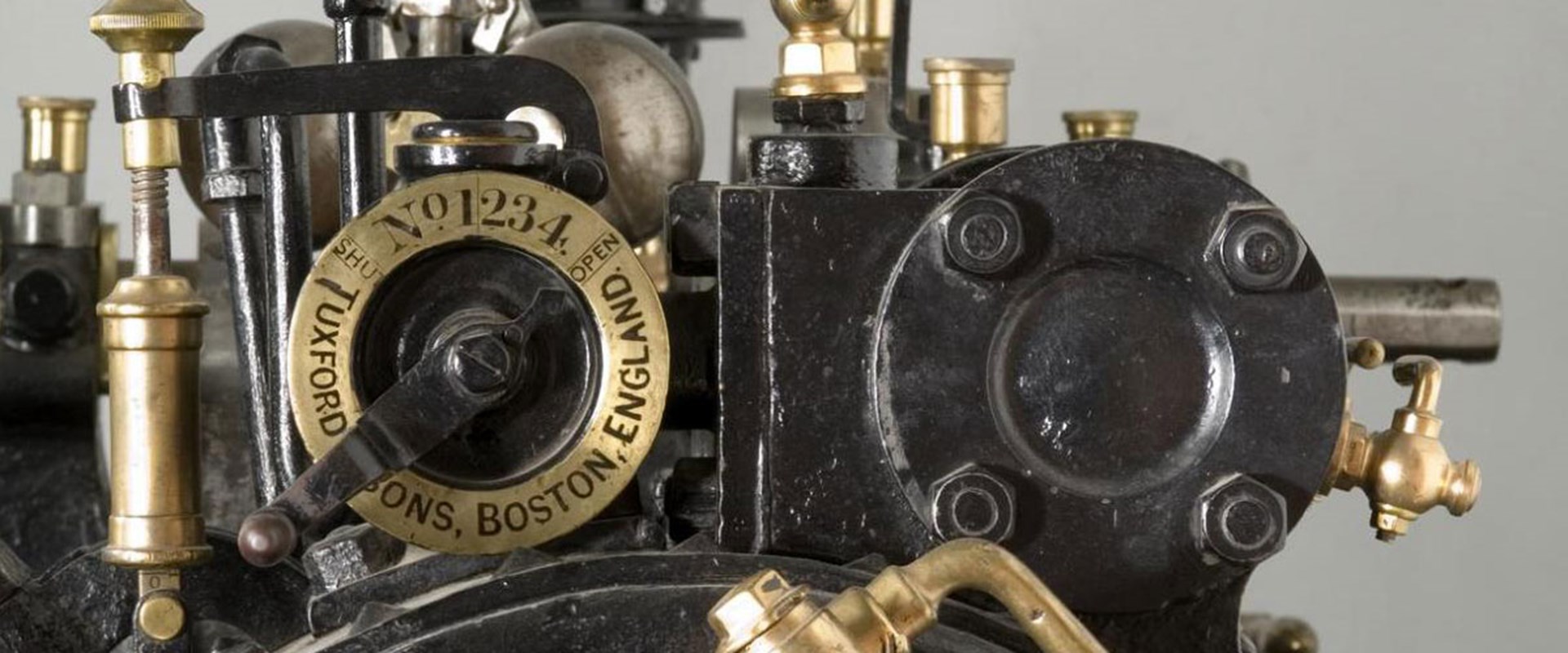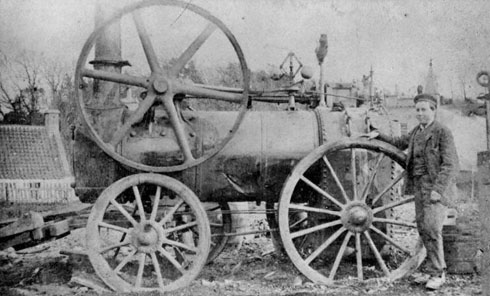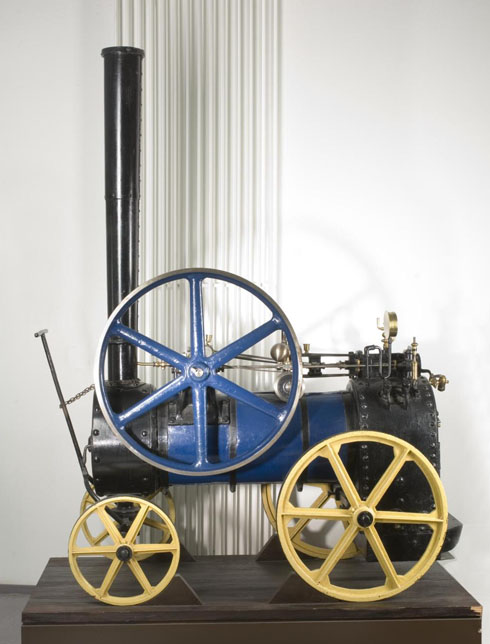Key in a search term below to search our website.
Key in a search term below to search our website.

Portable steam engines were in common use in industrialised countries from the early 19th century to the mid-20th century as power sources for machinery on farms and in rural factories.
Date
c.1886
Made by
Tuxford and Sons
Made from
Metal
Dimensions
Height 2.24m, length 1.8m, width 0.93m
Museum reference
Did you know?
Many portable steam engines have survived around the world but only a handful of Tuxford and Sons examples are known to exist. These include no. 106 at the Musée de arts et métiers, Paris; no. 1237 in Australia; and no. 1234 in the collection of National Museums Scotland.
An often-overlooked relative of the traction engine, the portable steam engine which sits in one place while powering machinery but can be easily moved from one work site to another. Consisting of an engine fitted onto a boiler, it was mounted on wheels so it could be towed, usually by horse. These sturdy engines were simple to operate and conveyed power by a long belt from a large flywheel to drive machinery, including threshing machines, water pumps and saw benches.

Above: Marshall Portable Engine at Kirknewton, Midlothian, c.1880.
This single-cylinder portable steam engine no. 1234 was made by Tuxford and Sons of Boston, Lincolnshire, around 1886. Rated at 1½ horsepower it was one of the smallest portable engines produced. Tuxford engines of the period were traditionally painted blue and the original cost of this example was in the region of £92. Repairs have been made to the smoke-box by welding at some stage and the Bourdon-type pressure gauge is a later addition, but otherwise the engine remains largely unchanged.
Nothing is recorded of the history of engine no. 1234 before it came to National Museums Scotland in 1951 from Haddington, East Lothian. It may have been used locally in a farmstead to drive machinery like a small threshing mill or chaff-cutter.

Above: Tuxford and Sons portable steam engine no.1234 at the National Museums Collection Centre.
One of the first Tuxford machines, a combined portable engine and threshing machine, was built in 1839, the first year of the Royal Agricultural Society. Tuxford designed the first truly portable steam engine allowing the application of steam power beyond the confines of the farmyard. The basic design of the Tuxford engine was then adopted by other manufacturers as a pattern for the development of their own portable steam engines.
The following is from an article entitled ‘The Forces used in Agriculture’ published in The Mechanics’ Magazine (1859):
"Messrs. Tuxford – among the first to start the locomotive agricultural steam-engine – informed him that for the earliest suggestion of it they are indebted to Mr. John Morton of Gloucestershire, the agent to the late Earl of Ducie, who twenty years ago [1839] recommended them to put these little engines upon wheels, thus foreseeing the fitness of these powers made locomotive to the circumstances of English agriculture."
Tuxford and Sons exhibited their engines widely at agricultural shows and exhibitions, including the Great Exhibition of 1851 in London, where they demonstrated a patent six horsepower portable housed steam engine for thrashing, grinding, sawing, pumping and general agricultural purposes.
Portable steam engines were replaced by traction engines in many roles by the end of the 19th century. Advances in vehicle technology and farm equipment, coupled with the electrification of rural areas, further displaced the portable steam engine, although it continued to be used in smaller numbers. In Scotland, the engines were used in forestry, with large examples powering saw mills up to the Second World War.